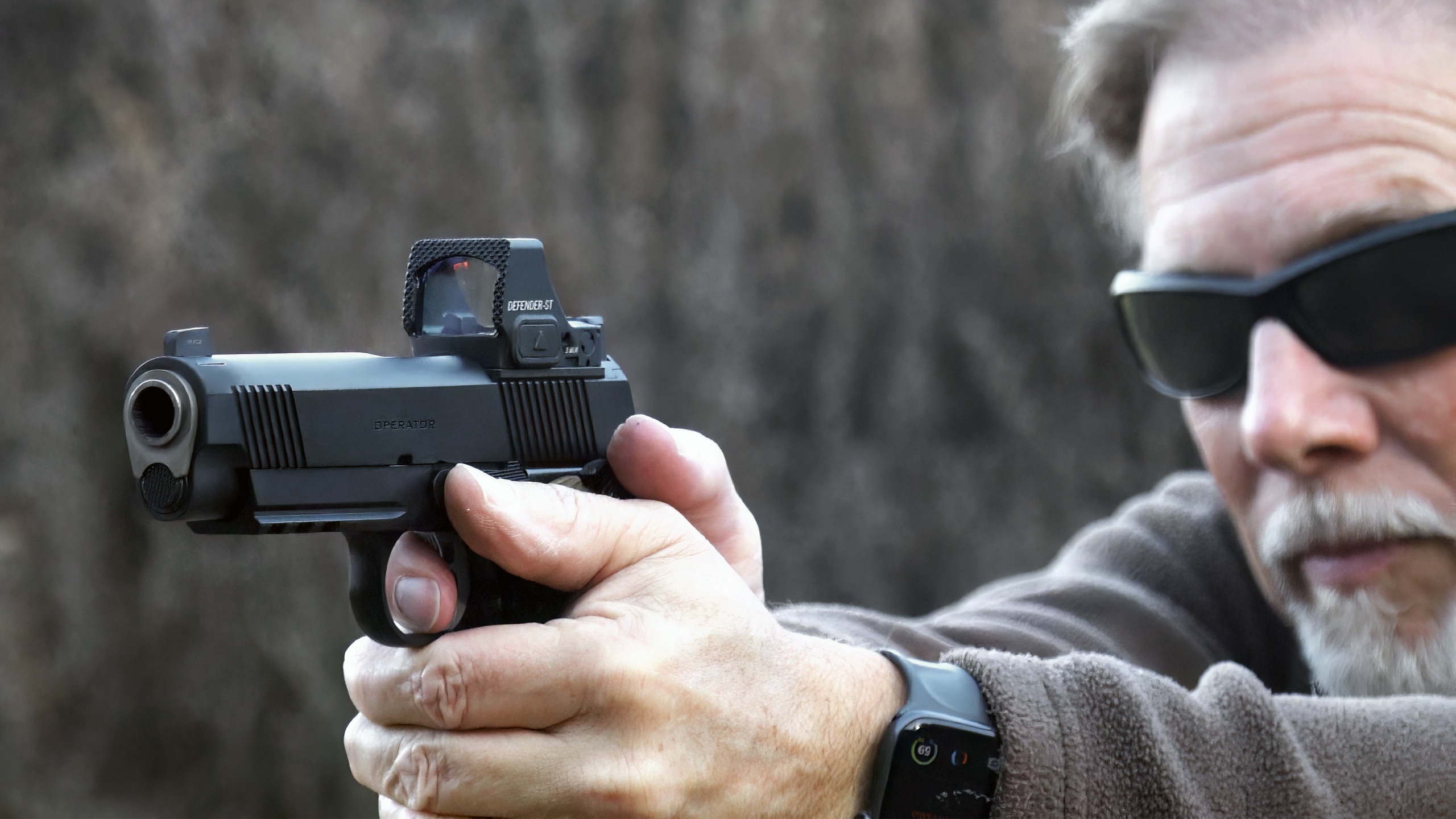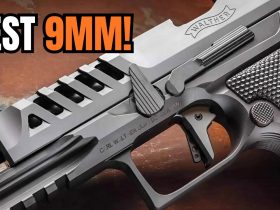Semi-automatic handguns in .22 LR represent one of the most important pillars of modern pistol shooting. Built around the quintessential rimfire cartridge, which has the built-in advantages of being less expensive (even with today’s inflationary prices) and having little to no felt recoil, .22-caliber pistols are quite useful for plinking, training new shooters and even cutting-edge competitive shooting. Since the humble .22 LR cartridge isn’t massive or extremely powerful, .22-caliber semi-automatic pistols don’t need to be overbuilt either. In virtually all cases, they get by with simple straight blowback actions. Like their chosen cartridge, the guns themselves tend to be more affordable in comparison to a typical centerfire pistol.
Taurus TX22 (Standard Model) MSRP $349
The Taurus TX22 is Taurus’ standard semi-automatic .22 LR pistol offering. Like most handguns today, the TX22 is a striker-fired model built around a polymer frame, and thus has a more contemporary look in comparison to more traditional-looking “target” style .22-caliber rimfire pistols. If the TX22’s design lines look familiar, it’s because Taurus incorporates some similar elements that are also found on the 9 mm GX4 pistol frame.
With a 4-inch barrel, a height of 5.44 inches and an overall length of 7.06 inches, its dimensions place it firmly in that “Goldilocks zone” of modern compact semi-automatic pistols, being neither too big nor too small for most people.
 Smith & Wesson SW22 Victory MSRP $459
Smith & Wesson SW22 Victory MSRP $459
Smith & Wesson’s SW22 Victory pistol is a target-style .22LR pistol with a more traditional layout that’s evocative of early rimfire classics such as the John Moses Browning-designed Colt Woodsman or the High Standard HDs of old. Unlike the venerable classics, the SW22 helps shooters hit their mark via the inclusion of a front sight with a bright fiber-optic insert and a fully adjustable rear sight. Since SW22 barrels are fixed in place and their actions cycle independently of it, Smith & Wesson engineered an easy “quick-swapping” feature that allows uses to easily separate the barrel from the frame via a single screw.
 Ruger Mk IV Target MSRP $679
Ruger Mk IV Target MSRP $679
As mentioned before, I salute the Colt Woodsman and the High Standard HD pistols and acknowledge their rightful positions in the pantheons of classic handguns. However, if we’re being honest, the Ruger Mk IV is the present monarch of the .22-caliber semi-automatic pistol realm. The Ruger Mk IV descends from what is arguably the most important dynasty in semi-auto rimfire pistols due to its ancestor, the Ruger Standard .22 LR pistol, also known as the Ruger Mk1. In the late 1940s, Bill Ruger took inspiration from the Nambu pistol and incorporated elements into an easy-to-manufacture and affordable .22 LR pistol. For generations, these guns were “the ones” to buy for the semi-automatic rimfire category and helped Sturm, Ruger & Co. to cement its place in the industry. Mk IV models still enjoy immense popularity today, and that many specialized companies like Volquartsen or Tandemkross sell aftermarket specialized components based on the Mk IV’s design is telling.
 SIG Sauer P322 MSRP $429
SIG Sauer P322 MSRP $429
Like the Taurus TX22 listed above, the SIG Sauer P322 has a more modern appearance. The SIG Sauer P322 also has a polymer frame and metal slide but being a modern offering from the New Hampshire gun industry titan, the SIG P322 takes after the lines found on its bigger centerfire brother, the SIG Sauer P365 XL. Of interest to the modern mounted red-dot focused shooter is also the fact that the standard SIG P322 model is optics ready. Two screws will remove the entire rear-sight assembly and give way to a slide that’s cut for the Shield RMSc footprint, the most popular optics mounting footprint for the smaller micro red-dot sights.
 Kel-Tec P17 MSRP: $205
Kel-Tec P17 MSRP: $205
The Kel-Tec P17 is this round up’s .22-caliber semi-automatic handgun value proposition. With an MSRP of only $205, this lightweight and low-cost model still ships with three 16-round .22 LR magazines and a fiber optic front sight. Kel-Tec P17 barrels are even threaded for the industry standard ½ x 28 in threads.
Read the full article here


















Leave a Reply